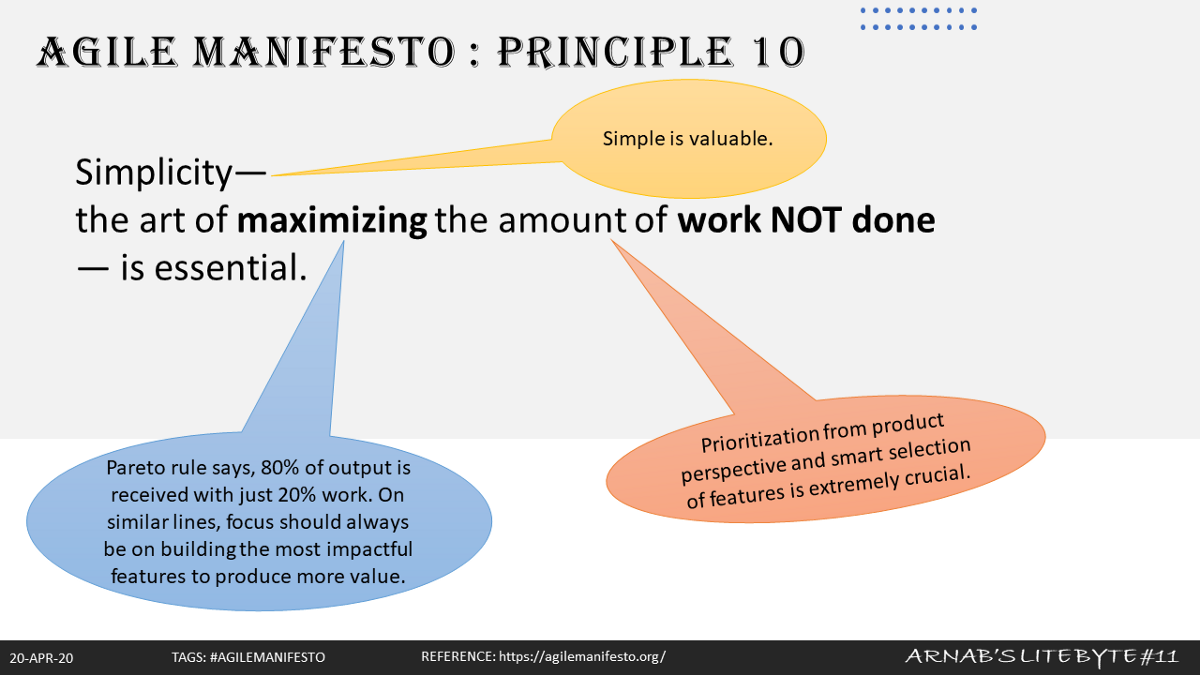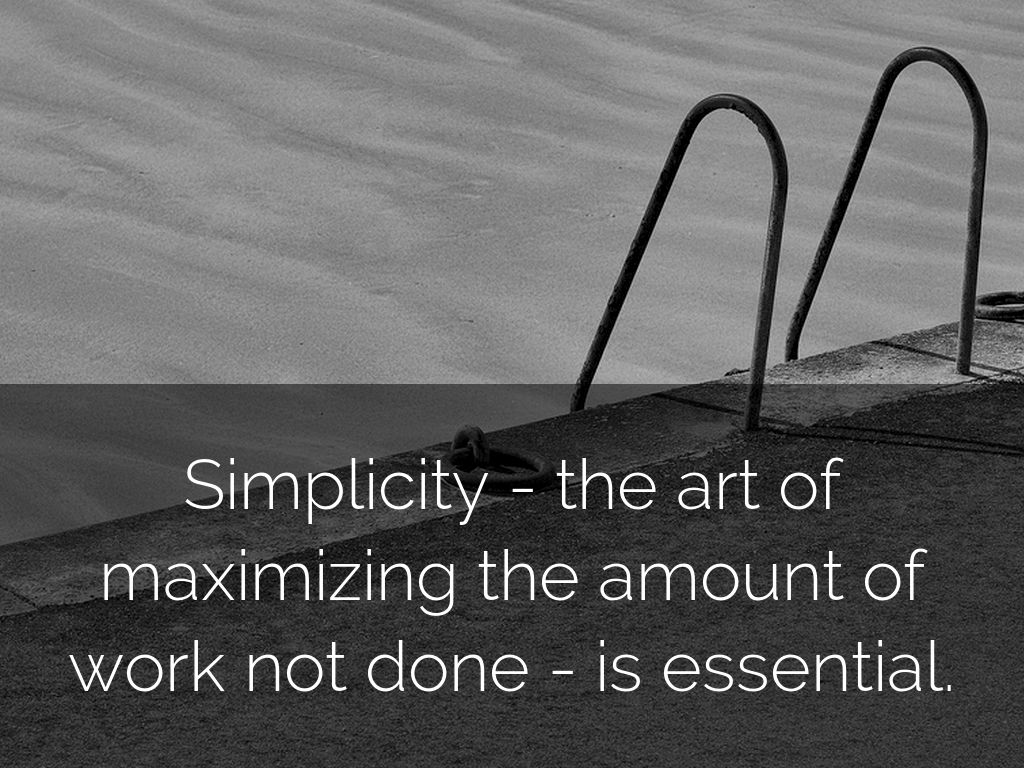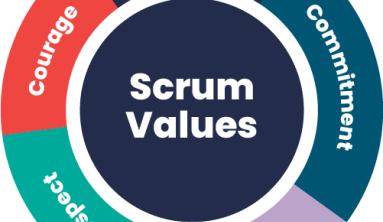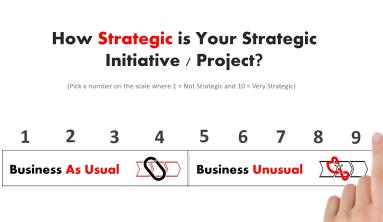The agile community has a saying: “Simplicity is the art of maximizing the work not done.” This idea is central to eliminating waste. To make your process more agile, do less.

However, you can’t take so much out of your process that it no longer works. As Albert Einstein said, “Everything should be made as simple as possible, but not one bit simpler.” Often, this means approaching your work in a new way.
Simplifying your process sometimes means sacrificing formal structures while increasing rigor. For example, an elegant mathematical proof sketched on the back of a napkin may be rigorous, but it’s informal. Similarly, sitting with customers decreases the amount of formal requirements documentation you create, but it substantially increases your ability to understand requirements.
Solutions come from feedback, communication, self-discipline, and trust. Feedback and direct communication reduce the need for intermediate deliverables. Self-discipline allows team members to work without the binding overhead of formal structures. Trust can replace the need to wait days—or longer—for formal signoffs.
Paring down your practices to the responsible essentials and removing bottlenecks lets you travel light. You can maximize the time you spend producing releasable software and improve the team’s ability to focus on what’s really important.
In Practice
XP aggressively eliminates waste, more so than any method I know. It’s what makes XP extreme.
By having teams sit together and ...





![[INFOGRAPHIC] The 12 Agile Principles](/sites/default/files/styles/style_383_222/public/2022-09/2022-09-22_22-29-58.png?itok=VVRsgf2U)